It Still Hurts. Why?
Hurt. Ouch. Pain. These three words are oft used to describe a feeling or sensation that we don’t like somewhere in our body….
Lost your password? Please enter your email address. You will receive a link to create a new password.

Hurt. Ouch. Pain. These three words are oft used to describe a feeling or sensation that we don’t like somewhere in our body….
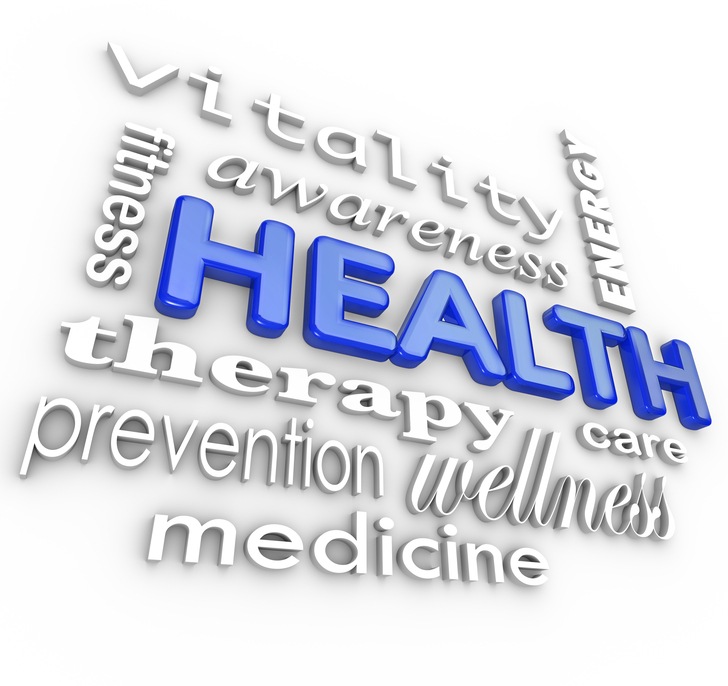
Health can be defined in a variety of ways.

There’s no right or wrong definition of health. It’s all what’s of most importance to you. However, unless you take a moment to reflect on and define it for yourself, you may by default be guided by your physician’s goal for your health.
Their goal is well-intended and certainly well researched, however, without the understanding what’s most meaningful to you in terms of your health, you’re likely following a standard protocol. They may get you 90% of the way to your health, not realizing it’s the last 10% beyond the standard protocol that enables you to achieve what is most meaningful to you.
As we’ve entered into a New Year when health goals are more at the forefront of our minds, it can be an inspirational time to determine what health means for us.
A vision helps you determine what you’re aiming towards.
You can then communicate a clearly defined vision with your health care providers, so they can support you in achieving your goal.
So, what does this look like?
As a nutrition coach, I always take new clients through this process.
What goal comes to mind first?
Generally speaking, the most popular answer is weight loss. But nobody wants to lose weight just to have a lower number on the scale. It’s about what they can do when they’re at that lower weight. (Walk up the stairs without being winded, not need a seatbelt extender during a plane ride or feeling comfortable in a bathing suit on your anniversary vacation.)
Because I work primarily with individuals that have autoimmune disease, the motivations are much deeper. The obvious would be less pain, more energy and increased mobility. But when truly getting to understand each person, they share that they want to regain the ability to walk down the driveway to get the mail, have enough energy to do their own grocery shopping, or reduce pain so they can sleep better at night.
The latter goals have such great detail that your care team will want to get onboard in setting you up for success.
From here, you can best determine what providers and services you need most to achieve health in your terms.
This may also prompt them to offer more options for you in achieving your goal. It could be as simple as suggesting a session with a physical therapist to a mediation app that’s been helpful to other patients in managing pain.
Bottom line, you need to first define your vision for health and then clearly communicate that vision with your healthcare team – ideally starting with your primary care physician – so you can be supported with the best path to your health success.
Join Alene for her upcoming webinar with MedFit Classroom:
Alene Brennan has been featured in USA Today, Philadelphia Inquirer, Huffington Post and Mind Body Green. Alene overcame debilitating migraine headaches through diet and lifestyle and is now once again using a “Less Pharm, More Table” approach is managing her diagnosis of Multiple Sclerosis. Alene holds four certifications: Nutrition Coach, Yoga Instructor, Personal Trainer and Natural Food Chef. She also completed specialized training in nutrition for autoimmune disease specifically the Wahls Protocol and the Autoimmune Protocol. Since receiving her MS diagnosis and seeing first-hand the power of using diet and lifestyle to create a healing environment in the body, she dedicated her virtual nutrition coaching practice to helping people with MS and autoimmune dieseases take back control of their health. Visit her website, alenebrennan.com.

 Are you being carried away the tide?
Are you being carried away the tide?
The best analogy I’ve come up with while working with clients to describe how most people live their lives is that they get carried away by the tide.
Imagine the powerful ocean currents pulling you in whichever direction they wish.
Life can have the same effect. People, circumstances, and indecision can carry anyone away into the tide if you let it.
It’s how people lose track of their priorities and find themselves unhealthy.
I believe this is why people are unhappy in jobs, relationships, and with life in general. Because we think life is out of our control. We forget that we get to choose.
So, if you catch yourself thinking that a situation you’re unhappy with just “is what it is,” that’s a sign you’re being carried away in the tide.
We can change any circumstance in our lives, even if it’s just changing how we perceive it. If that’s something you’d like support with regarding your health, I’d love to chat.
In conclusion, the next time someone asks you if you are being carried away by the tide, you can say: “Not anymore!”
Originally printed on Move Well Fitness blog. Reprinted with permission.
Maurice D. Williams is a personal trainer and owner of Move Well Fitness in Bethesda, MD. With almost two decades in the industry, he’s worked with a wide range of clients, including those with health challenges like diabetes, osteoporosis, multiple sclerosis, hypertension, coronary artery disease, lower back pain, pulmonary issues, and pregnancy. Maurice is also a fitness educator with Move Well Fit Academy and NASM.

The most basic question each of us can ask about our future lives is this one: How do I want to be old? Now at 72 I can look back on my behavior, choices and priorities from my past and can see that I DID in fact value my life and the gift that it is to me in the present. My visit the week before my father’s death in 1983 from cancer had a great impact on my future choices moving forward. I was 37 at the time and looking back on my experience with him in the hospital I now realize that it was indeed a “wake up” call for me.
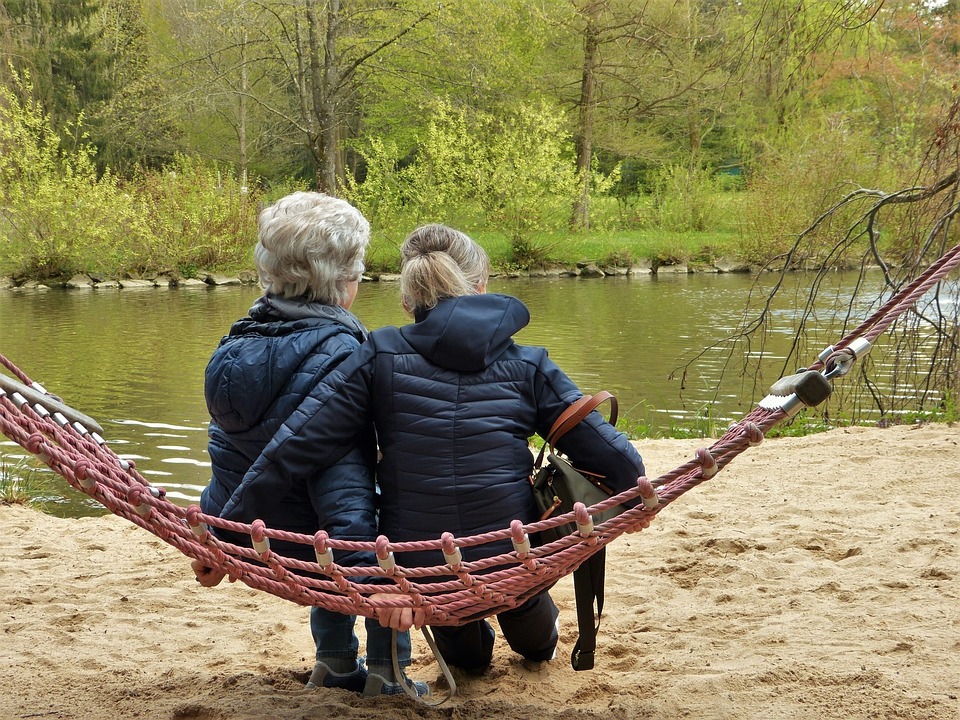 We all have moments like the one I am describing here in our lives that catch our attention. It is important to know that when we DO experience loss or change on a large scale that we become “active participants” in responding to the circumstances that are presented to us. We need to take action – positive action – in order to alter the course of our lives. It is through adjusting to the changes and challenges of life as we grow into maturity (and hopefully wisdom) that we can appreciate what we have been given.
We all have moments like the one I am describing here in our lives that catch our attention. It is important to know that when we DO experience loss or change on a large scale that we become “active participants” in responding to the circumstances that are presented to us. We need to take action – positive action – in order to alter the course of our lives. It is through adjusting to the changes and challenges of life as we grow into maturity (and hopefully wisdom) that we can appreciate what we have been given.
Recently I read an account of a tragic story involving a Costa Mesa Fire Captain who was preparing for a triathlon he had entered. He was riding his bicycle on the sidewalk near his home training for the cycling phase of the competition when a driver in a van ran up on the sidewalk and struck and critically injured the captain. He was taken to a nearby hospital and treated for severe head – and brain – trauma but the doctors were unable to save his life and he died on the Monday following the Saturday incident. The driver of the van was found to be on a variety of drugs and had other prescription medicines in his vehicle. He was arrested at the scene and later charged with murder following the death of the fire captain. He left a lovely wife and three beautiful daughters behind.
The point of this tragic event is that it caught my attention when I saw a picture of his lovely wife and the three young daughters he left behind. This example of tragic loss serves as a reminder to me of how our lives can be altered in an INSTANT – permanently. I felt this loss deeply for some reason and even though I did not know the man I am feeling grateful for my OWN life today – and hopefully everyday. (Last night a mass shooting in 1000 Oaks took the lives of 12 students and wounded scores more – and so it goes on!).
I believe we live in the present to the degree that we respond to life’s events consciously – even if they are not specifically for us – and that healthy aging occurs in this moment. I thought I would share some of my thoughts with you on this important subject so that you might also appreciate YOUR life and your OWN journey in greater depth. It is through our own pain – and that of others – that we are allowed the opportunity to face our own mortality – and appreciate in greater measure the gift of our OWN life. The three principles of healthy aging that I will share with you – and practice – are physical, mental and spiritual. Let us NOT let a moment pass where life is rendered insignificant but instead recognized as precious and valuable.
CYCLING: I just completed a wonderful bike ride after getting the bike repaired following a silly minor accident yesterday that could have been totally prevented (lesson learned). It represents what I call the “endurance” phase of my training program. It covers both time and distance over a beautiful course and strengthens my heart and cardiovascular system for the years ahead. This part of my training is purely recreational and covers about two and a half hours of my training time per week. I look forward to riding my bike because I am not setting any particular goals other than to enjoy my time riding. I love just being on the trail and feeling the breeze in my face and seeing the beauty of nature as I ride by.
 RUNNING: I have been a runner since 1964 and have accumulated over 65,000 miles over that span. It is the foundation from which I “grew older and not old”. It is as close to my heart as breathing itself and I am now focusing on increasing my speed while running between 5 and 7 miles 3 days a week. I am now able to average under 6:00 per mile pace for the distances I use and am doing so on a treadmill to save wear and tear going forward. Cycling has helped my running immensely and my legs are stronger as a result.
RUNNING: I have been a runner since 1964 and have accumulated over 65,000 miles over that span. It is the foundation from which I “grew older and not old”. It is as close to my heart as breathing itself and I am now focusing on increasing my speed while running between 5 and 7 miles 3 days a week. I am now able to average under 6:00 per mile pace for the distances I use and am doing so on a treadmill to save wear and tear going forward. Cycling has helped my running immensely and my legs are stronger as a result.
RESISTANCE TRAINING: I spend up to two and half hours total each week training on free weights and machines for both power and strength. I do 17 exercises and multiple sets per exercise twice a week. The strength I gain from this activity is priceless and if any of you wish to be able to function well as you are getting older this is the activity I would strongly recommend. The three phases of fitness training I do bring me joy and peace. I am strong, fast, adaptable and flexible and know that what I am doing in my 70’s will prepare me well for my 80’s!
CONSCIOUSNESS: I believe in the value of “being conscious” – that is “being present and aware” in any moment. Receiving input from your daily activities can help you to make conscious – and healthy – choices going forward. If you are constantly staring at your I Phone as I see so many doing these days then you are NOT present – and life is literally “passing you by”! Remember for consciousness to play a part in your life you have to take the time “to listen to your thoughts” and assess “where you are” at any point in time. It is an activity that requires your attention and can be easily accessed simply by “noticing” people and their behavior around you.
Smiling is a great way to “become present” because when you are smiling at someone – and thanking them – you are practicing “being in the present”. Acknowledging those around you is a good way to begin developing the mental skills and focus that will be required of you as you grow into your “older” self. I know this because it is the path I have chosen in my own life – and it works!
I refer here to the search for purpose and meaning in life and not a particular religious path or faith. My own spiritual training and practice began in 1985 and has continued to this day. It is a principled practice based upon the Science of Mind formulated by Ernest Holmes through his teachings and book (The Science of Mind) and it has guided my choices and development as a human being for the past 33 years. It has been a priceless and integral part of my life and each day I spend time in meditation and (affirmative) prayer work in order to listen for inner guidance and prepare for the times ahead.
This part of my life is the key to being “aware” of the gift of my life and is the reason I was able to be so touched by the captain’s death. I did not have this foundation when my father died in 1983 so now I am always aware everyday that my “life can indeed change in an instant”. I am not saying we have to obsess over the fear of something happening to us but I AM saying lets remember to be grateful in every moment of our day. This aspect of our life’s journey – the search for purpose and meaning (and our place in life) – is essential if we are to live a life of accomplishment and fulfillment. CHOOSE your OWN path wisely and if you choose NOT to, at least you will know that you made that choice and you will have to be accountable – and responsible – for it in the future!

In reflecting on the meaning of my life as a teacher, author and speaker, I have come to the conclusion that the reason I have arrived at this point in my life is that I made CONSCIOUS choices that supported the actions that led me to be able to share this knowledge with you today. In the words we choose to use, the thoughts we entertain, the beliefs systems that we embody, the choices that we make and finally the actions that we take, we are either preparing for a future of contribution and significant service – or we are not.
I encourage you today to “notice” something that gets you thinking about your own life today – and remember to appreciate all that you have been given today – and every day. Noticing the story of the firefighter’s death made me realize how blessed I am and with every step I take, every thought I think, every choice I make, and every action that results from this process, I am appreciating all that I have been given so that I might share what I have learned with you! Take the time today to reflect on what might occur in your own life and how you would respond to the events and changes that are occurring today. I know that a loving father’s family is thinking about this very thing in the aftermath of his tragic loss. BE WELL!
Originally posted on healthynewage.com. Reprinted with permission from Nicholas Prukop.
Nicholas Prukop is an ACE Certified Personal Trainer & a Health Coach, a fitness professional with over 25 years of experience whose passion for health and fitness comes from his boyhood in Hawaii where he grew up a swimmer on Maui. He found his calling in writing his first book “Healthy Aging & You: Your Journey to Becoming Happy, Healthy & Fit” and since then he has dedicated himself to empowering, inspiring and enabling people of all ages to reach for the best that is within them and become who they are meant to be – happy, healthy and fit – and be a part of a world where each person can contribute their own unique gifts to life.

Your environment affects your sleep. In this article, you will learn some tips that can help you improve the state of your bedroom.
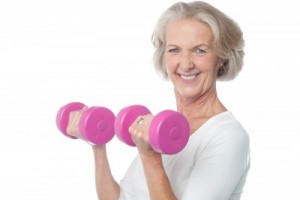
We have all heard of the benefits of exercise. Exercise increases metabolism and promotes weight loss while it can lower cholesterol and high blood pressure just to name a few. According to the US Dept. of Health and Human Resources 2008 Physical Activity Guidelines for Americans, it is recommended that adults do at least 150 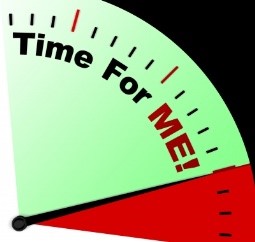 minutes a week of moderate-intensity aerobic physical activity. They also suggest muscle-strengthening activities that are moderate or high intensity and involve all major muscle groups on 2 or more days a week. As baby boomers, we can have a pretty busy schedule. As a 50 something baby boomer myself, I juggle quite a bit of activities in a day. I’m not complaining though, life at this stage of the game is exciting. It’s refreshing to see older adults doing more than ever before. Ironically, the busier our lifestyles are, the more we need the benefits of exercise but find that time becomes harder to come by.
minutes a week of moderate-intensity aerobic physical activity. They also suggest muscle-strengthening activities that are moderate or high intensity and involve all major muscle groups on 2 or more days a week. As baby boomers, we can have a pretty busy schedule. As a 50 something baby boomer myself, I juggle quite a bit of activities in a day. I’m not complaining though, life at this stage of the game is exciting. It’s refreshing to see older adults doing more than ever before. Ironically, the busier our lifestyles are, the more we need the benefits of exercise but find that time becomes harder to come by.
What if I tell you that in just 15-30 minutes a day you can do both strength and endurance training with a circuit training workout? What exactly is circuit training you ask? After your 5 minute warm up, it is a circuit or group of exercises that can be designed to be a full body workout. Each exercise within the circuit can be timed for 30 – 60 seconds with a brief pause between each exercise. Once you complete all the exercises in the circuit you take a break for up to three minutes and if your fitness level and time permits, you can repeat the circuit 2- 3 times.
*It’s for all fitness levels– safe level of exercise for beginners.
*Feel a Sense of Accomplishment – Get a total body workout.
*Lose weight more effectively by continuous movement throughout your workout.
*Burn more calories post workout than a traditional aerobic workout. (August 2005 issue of the “European Journal of Applied Physiology”)
*Versatile – Workout anywhere and the options are endless.
*Most Important – Circuit training saves time!
Before beginning any exercise program it is recommended that you consult with your doctor. If you have a green light to exercise then you may want to try circuit training.
 Beginner Total Body Circuit:
Beginner Total Body Circuit:Perform a 5 minute warm-up including flexibility exercises. Set a timer for 60 seconds. Perform each exercise for 30 to 60 seconds with a rest of 15 seconds in between each exercise. After completing the circuit once through, break for 1 to 3 minutes and repeat the circuit if desired.
Gina Baumgartner is NASM certified personal trainer, Certified Senior Fitness Specialist and Certified Functional Aging Institute Specialist. She loves helping mature adults meet their fitness potential with small group and one to one personal training. She specializes is 50+ personal training incorporating flexibility, balance, core stabilization and strength training into each workout. Visit Gina’s MFN profile: medicalfitnessnetwork.org/members/gina-baumgartner
References:
2008 Physical Activity Guidelines for Americans; health.gov/paguidelines/pdf/paguide.pdf
Ncbi.nlm.gov/pubmed/15942765
Image courtesy of Stuart Miles at FreeDigitalPhotos.net
Image courtesy of Stock Images at FreeDigitalPhotos.net

Trade Your Expectations — one of Tony Robbins many quotes.
When we look at our lives, there’s often an expectation of how things should go.
We want to be in shape, and we have expectations around that process.
We want financial abundance, and we have expectations around how it should happen and where it should come from.
When our expectations aren’t met, we experience disappointment, doubt, feelings of failure, or perceptions of unfairness.
 But what if you trade your expectations for appreciation? Appreciate the fact that you are able to exercise, that you have a wonderful family or great friends, or that you’re resourceful enough to eventually reach your outcome.
But what if you trade your expectations for appreciation? Appreciate the fact that you are able to exercise, that you have a wonderful family or great friends, or that you’re resourceful enough to eventually reach your outcome.
When you set expectations about how something should go, you are setting yourself up for disappointment. This isn’t to say you shouldn’t set goals but rather to be flexible in how you achieve them.
If you can trade your expectations for appreciation, your whole world will change. You’ll see the positive instead of the negative in situations. You’ll experience more love and success. You’ll have more financial abundance.
You can create the life you dream of living, but it starts here.
Originally printed on Move Well Fitness blog. Reprinted with permission.
Maurice D. Williams is a personal trainer and owner of Move Well Fitness in Bethesda, MD. With almost two decades in the industry, he’s worked with a wide range of clients, including those with health challenges like diabetes, osteoporosis, multiple sclerosis, hypertension, coronary artery disease, lower back pain, pulmonary issues, and pregnancy. Maurice is also a fitness educator with Move Well Fit Academy and NASM.

 Sure, there’s nothing new about saying added sugar is bad for you (regardless of your age). Your mom told you, and your doctor says so, too, but you can’t sugar-coat the truth — you love the sweet stuff. So what else is new? Well, it turns out that there is something that is both new and troubling about sugar.
Sure, there’s nothing new about saying added sugar is bad for you (regardless of your age). Your mom told you, and your doctor says so, too, but you can’t sugar-coat the truth — you love the sweet stuff. So what else is new? Well, it turns out that there is something that is both new and troubling about sugar.
A new study reported that added sugars have been found to have a profound effect in causing frailty in adults over 60. Frailty is defined by meeting three out of five of these criteria: unintentional weight loss, exhaustion, low physical activity, slow walking, and weak grip strength. The frightening consequences of frailty are an elevated vulnerability to falls, disability, and earlier death. (1)
In the study, participants were divided into three groups based on their intake of added sugars. Three years later, those participants who consumed at least 36 g sugar per day (about the amount in one 12-ounce can of soda) had more than double the risk of becoming frail over the follow-up period compared to those who consumed less than 15 g per day. Even after adjusting the group’s results for physical activity, the risk was still elevated more than two-fold in the high-sugar group. (2)
The reason? It could be sugar’s impact on muscle mass. Other research has found that high sugar intake may diminish the body’s ability to maintain muscle mass with age. (3)
And if that wasn’t enough to sour your taste for sweet, the study also found that sugars in processed foods were the most strongly associated with frailty. Given the fact that added sugar is often hidden in processed food — think tomato sauces, yogurt, ketchup and granola bars — this is concerning news for all.
Fortunately, you can still enjoy the deliciousness of naturally occurring sugars. They were not associated with an increase in frailty risk (naturally occurring sugars in this study included those in fruits and vegetables, but not fruit juices).
Instead of seeking out added sugars, try adding naturally sweet fruits and vegetables (such as carrots and sweet potatoes) to your diet. They provide valuable phytochemicals, such as flavonoids and carotenoids, and – importantly – fiber, which slows the absorption of their sugars, minimizing their glycemic effect.
The Standard American Diet: lots of sugar, very little fruit: (4)
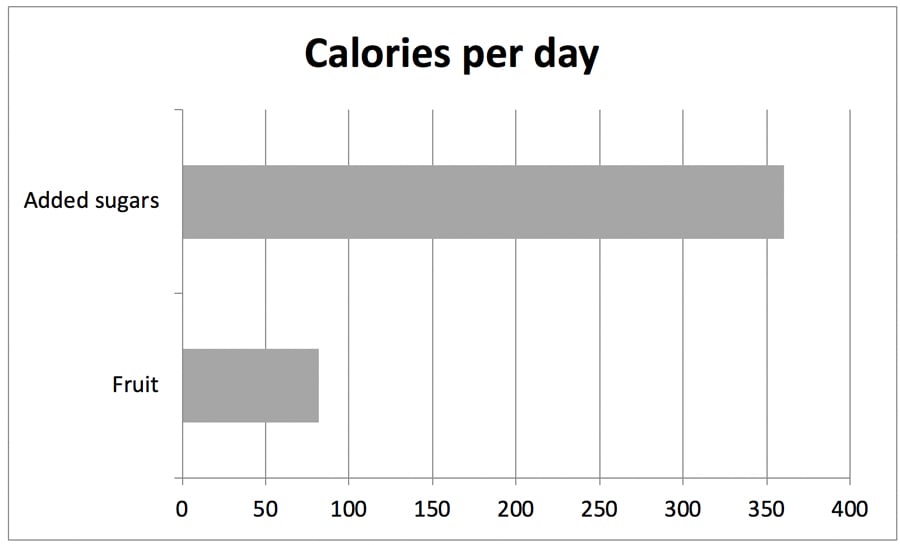
But don’t go overboard with dates and dried fruit. Avoid all sweetening agents including maple syrup and honey. Excessively sweet foods keep your taste buds accustomed to that excessive sweetness, perpetuating the desire for more sweet foods, which also promotes weight gain. When you consume overly sweetened foods regularly it makes real food such as fresh fruits not taste as spectacular. A piece of fruit for dessert or a small amount of dried fruit to sweeten a sauce or salad dressing is all you need.

A healthy diet excludes processed foods and includes a wide assortment of fruits, vegetables, beans, seeds and nuts—with their vast array of phytonutrients.
In a systematic review of many studies, researchers found a low intake of several micronutrients — including vitamin D, vitamin E, vitamin C, folate, vitamin A, vitamin B6, and carotenoids alpha-carotene, beta-carotene, and cryptoxanthin — also had links to frailty. Similarly, biomarkers of nutrient inadequacy were also linked to frailty, such as MMA (a marker of B12 deficiency), and low levels of serum carotenoids, alpha-tocopherol (vitamin E), vitamin D, and vitamin B6. (5) So you see, it is important to not only be aware of the harm caused by add sugar, but also to keep eating healthfully.
The good news? A diet with higher antioxidant capacity (like a Nutritarian diet) was associated with a lower risk of frailty.(4)
One of the most important benefit of a Nutritarian diet is that, coupled with exercise, it allows you to enjoy life in your 80s and 90s while gobbling up delicious dishes that even your sweet tooth will appreciate. This eating style not only promotes weight loss in the short term, it is designed to slow aging and maximize longevity. Here’s why:
A last note about protein: The loss of muscle mass associated with frailty can be due in part to undernutrition, inadequate protein in particular. The elderly may have less efficient absorption and utilization of protein, which could lead to excessively low IGF-1 levels. Older folks may require a higher and evenly distributed protein intake compared to younger and middle-aged adults to maintain muscle mass. (Read more about this topic.)
Originally printed on DrFuhrman.com. Reprinted with permission.
Joel Fuhrman, M.D. is a board-certified family physician, six-time New York Times bestselling author and internationally recognized expert on nutrition and natural healing, who specializes in preventing and reversing disease through nutritional methods. Dr. Fuhrman coined the term “Nutritarian” to describe his longevity-promoting, nutrient dense, plant-rich eating style.
For over 25 years, Dr. Fuhrman has shown that it is possible to achieve sustainable weight loss and reverse heart disease, diabetes and many other illnesses using smart nutrition. In his medical practice, and through his books and PBS television specials, he continues to bring this life-saving message to hundreds of thousands of people around the world.
References

Telomeres are sections of genetic material that form a protective cap at the end of each chromosome in every cell of the body. When a cell divides, the telomere gets a tiny bit shorter, until there is no more telomere left to protect DNA from “unraveling,” and the cell dies. Cellular death causes the body to age, whether the cell is from cardiac muscle, skin, or brain tissue, thus making telomeres a novel biomarker for biological age. The longer one’s telomeres, the younger one’s biological age. Several things affect telomere attrition rate – both positive (good nutrient status, healthy blood sugar and lipid metabolism, normal weight, exercise, etc.) and negative (micronutrient deficiencies, inflammation, cellular stress, a sedentary lifestyle, etc.).

Shammas M. Telomeres, lifestyle, cancer, and aging. Curr Opin Clin Nutr Metab Care. 2011 Jan; 14(1): 28–34. Illustration: Ivel DrFreitas MD, ABIM, ABAARM.
Micronutrient status has direct implications for telomere length. This makes it especially important to correct specific deficiencies and maintain micronutrient balance. Measuring total antioxidant capacity via SPECTROX® is equally important as the body’s ability to handle oxidative stress contributes significantly to telomere health/length.
OmegaCheck® measures the amount of three very important fatty acids (EPA, DHA, and DPA) in one’s blood. Fatty acids can either contribute to or alleviate inflammation, and the OmegaCheck determines the amount of these pro- and anti-inflammatory fatty acids. Although the protective omega-3 fatty acids influence enzyme and hormone systems throughout the body, they have gained attention primarily for their superb cardiovascular benefits. Since fatty acid status is a surrogate marker for inflammation and oxidative stress, it is not surprising that omega-3 fatty acids can slow cellular aging by preserving telomeres. When it comes to OmegaCheck, higher is better.
Omega-3 fatty acids can slow the aging process. There are many reasons for this: they reduce inflammation, help maintain the cardiovascular system healthy, and protect the brain. However, the existing research points to an entirely different mechanism of action against aging: protection of telomeres.
A recent study on people with active heart disease demonstrated that individuals with high blood levels of omega-3 fatty acids also had the lowest rate of telomere attrition, suggesting that omega-3 fatty acids protect against cellular aging.1 In another study, the adoption of comprehensive lifestyle changes (including daily supplementation with 3 grams of fish oil, which is high in omega-3 fatty acids) was associated with an increase in telomere length in human leukocytes.2 In animal studies, dietary enrichment of omega-3 fatty acids prolongs life span by approximately one-third.3
Yet another way that omega-3 fatty acids have a protective effect on telomeres is through their action on cortisol. Following six weeks of fish oil supplementation, a group of men and women in a study demonstrated significantly reduced4 cortisol, a stress hormone known to reduce the activity of telomerase,5an enzyme that protects and even lengthens telomeres. Even stress-related cellular aging may be thwarted by omega-3 fatty acids!
SpectraCell’s telomere test measures a person’s telomere length. A control gene is also measured and compared to the telomere length, and then results are stated as a ratio. A higher ratio means a longer telomere, and younger biological age. The Telomere Score is also compared to other individuals in the same chronological age group.
The price of the Telomere Test is affordable and is also covered by insurance. Testing once each year or every other year is suggested to monitor the rate of telomere loss.
The great news is that with the telomere analysis and appropriate lifestyle, habits, you can protect your telomeres and reduce the rate at which they shorten! Discover your estimated cellular age today with a comprehensive, and individualized approach to managing the aging process.
Click here to learn more about SpectraCell testing services.
Reprinted with permission from the SpectraCell blog.
SpectraCell Laboratories, Inc. is a leading clinical laboratory specializing in personalized disease prevention and management solutions. Our pioneering intracellular micronutrient and cardiometabolic testing, driven by state-of-the-art technology, assesses a spectrum of risk factors and biomarkers for optimum wellness. Through our dedication to research and development, SpectraCell also provides innovative solutions for hormone health and genetics.